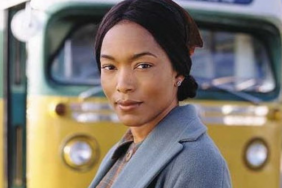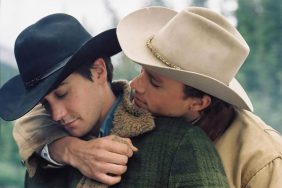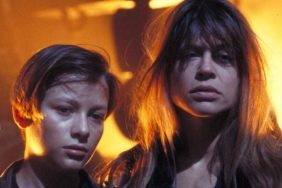
You may have heard the news that Studio Ghibli – the Japanese animation company behind some of the best movies of the last three decades – is shutting down. You may have also heard that they are only shutting down temporarily, or are even being purchased by another company. Whatever the case may be, Studio Ghibli is on our minds here at CraveOnline, and we got to wondering: What’s the best Studio Ghibli movie ever?
Check Out: The Best Movie Ever: Ragtag Bunch of Misfits
Join CraveOnline’s film critics William Bibbiani, Witney Seibold, Fred Topel and Brian Formo as they present their own, personal choices for the best Studio Ghibli movie, then scroll down to the bottom of the page to vote for your own, personal favorites. Did our critics get it right, or did they miss the best one(s)? Let us know and come back next week for another divisive installment of The Best Movie Ever!
William Bibbiani:

Studio Ghibli is, in my own personal experience, and in a fairly roundabout way, a lot like “Doctor Who.” Whichever one you see first tends to be your favorite. My heart will always hold a very special compartment for Princess Mononoke, a mature and thrilling fantasy epic that came along at a time when I thought the fantasy genre was pretty well dead, but we’re not here to play favorites. We’re here to single out the best.
My Neighbor Totoro is a gentle gift to the world, which only sounds hyperbolic until you’ve seen it for yourself. (Avoid the original English language dub, it’s full of unnecessary screaming, but the newer dub is just fine if you can’t handle subtitles.) It’s absolutely absorbing because of – as opposed to in spite of – the fact that there really isn’t any plot to speak of. Two young girls move to the countryside with their father while their mother convalesces in a nearby hospital. Their house is haunted by local spirits, and when they tell their father he absolutely believes them. Perhaps he’s enlightened, perhaps he’s just too kind to deny them a flight of whimsy at a hard time in their childhoods, but either way My Neighbor Totoro is that rare children’s fantasy that never contrasts the imagination of the young with the cynicism of the old and jaded.
Hayao Miyazaki lets the enchanting imagery of My Neighbor Totoro wrap its arms around you, or perhaps it simply lies down and let you snuggle up in its furry folds. It’s a feature length reminder that there is magic and decency in the world, grounded only by the anxieties of children who might otherwise lose sight of this very important, yet oft-forgotten fact. It’s a special film, Hayao Miyazaki’s best, Studio Ghibli’s best, and a personal pick for one of the finest motion pictures ever produced.
Witney Seibold:

While not all of Studio Ghibi’s films have been undisputed classics (From Up on Poppy Hill was rather mild, and The Cat Returns is a pretty forgettable fantasy flick), the famed purveyors of anime have had an amazing consistency. Fans of animation, film scholars, critics, and that strange subset of pop culture known as anime fans (sometimes called otaku) all agree that Studio Ghibli is the best animation studio in all of Japan, perhaps the entire world. Their films are calming, mature, complex, and so very, very imaginative. They tap into something innocent, sometimes even childlike. They explore not “story,” but the of-mentioned-but rarely-used-properly term “myth.” Many of their films are achingly nostalgic, gently sentimental, and pay equals attention to both the fantastical and the glowingly vital mundane.
The studio’s best film came early on. In 1988, Isao Takahata directed a wartime film called Grave of the Fireflies, and it’s perhaps one of the most heart-wrenching, tragic, and depressing film I have seen this side of Ingmar Bergman. Grave of the Fireflies follows a boy of about 14 and his 6-year-old sister as they attempt to survive – and as they eventually starve – following the firebombing of Kobe in 1945. The film is essentially a litany of their sadness and pain as they wither, grasp for hope, and try to remain human kids. And while that sounds like a miserable film experience, there is an elevative, deeply moving quality to Grave of the Fireflies. The animated form takes the ugliness and damage and pain of the civilians’ wartime experience, and makes it artistic, moving, and emotionally immediate. If these had been live actors, we would have been looking at specific people. By making them animated faces, we can appreciate them in a more abstract, universal way. And the true horrors of war become more intense, sadder, and less preachy.
Watch Grave of the Fireflies. But bring some tissues.
Fred Topel:

Brian Formo:

I feel a little silly going with the most recent Studio Ghibli film, but I think Hayao Miyazaki’s The Wind Rises best exemplified the studio’s ability to imbue drawn animation with sweeping motions. The movement is directional. Miyazaki uses animated upward movements to represent innovative thought — in this case plane engineering — and downward motions for destruction — an earthquake and the inevitable bombs that are placed inside the engineers’ creations.
Oh, but there’s still fantasy in The Wind Rises: numerous dream sequences where a Japanese plane engineer compares designs with an Italian engineer. Fantastic tales is how Miyazaki became so beloved — ghosts, dragons, fights for honor — but The Wind Rises reminds us that he’s a fantastic engineer. And the way he directed an animated film with such fluid pans and tracks was a magnificent achievement. And it is, perhaps, most evident in a film that lacks mystical worlds.
There have been complaints that Miyazaki — who’s staunchly anti-war and who, in protest of the USA’s occupation of Iraq, didn’t even pick up his Best Animated Feature Oscar for Spirited Away — would make such a loving portrait of an artist that designed planes for war. Notice, I said artist. That’s the heart of The Wind Rises. His real-life subject, Jiro Horikoshi, is told in a dream that engineers are like artists: they’re only on top of their craft for ten years. The Wind Rises is one artist giving an artistic treatment to an engineer whose designs happened to come at the time of a war that lasted ten years. If The Wind Rises angers you by stopping short of the actual war, Ghibli also offered a touchingly horrific WWII survival film, Grave of the Fireflies. It hovers about this film like a mushroom cloud.








